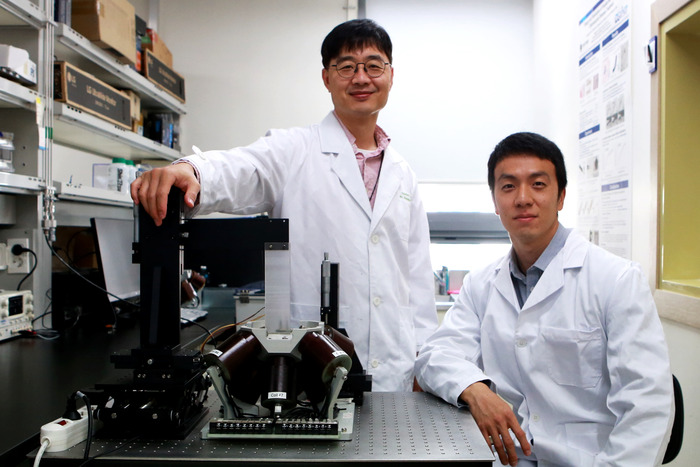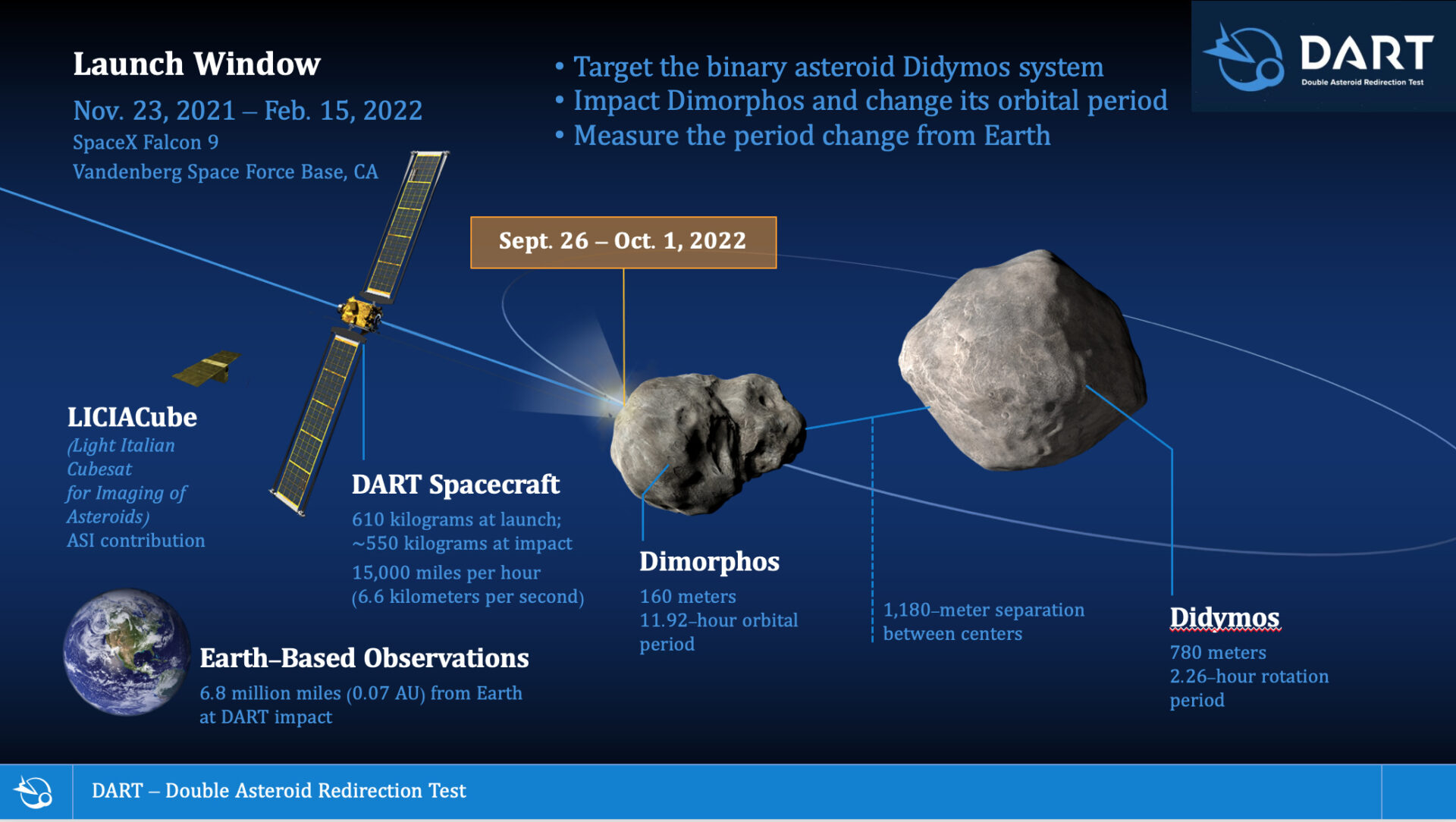
Prof Choi, Hongsoo (Left) and Dr. Jeon, Seongwoong (Right) at Robotics Engineering, DGIST
CREDIT: DGIST
The joint research team of Prof. Hongsoo Choi(DGIST) & Prof. Sung Won Kim(Seoul St. Mary’s Hospital), developed an hNTSC-based microrobot for minimally invasive delivery into the brain tissue via the intranasal pathway.
The team developed a magnetically powered human nuclear transfer stem cells(hNTSC)-based microrobot and a method of minimally invasive delivery of therapeutic agents into the brain via the intranasal pathway. And they also accomplished transplanting the developed stem cell-based microrobot into brain tissue through the intranasal pathway that bypasses the blood-brain barrier. The proposed method is superior in efficacy and safety compared to the conventional surgical method and is expected to bring new possibilities of treating various intractable neurological diseases such as Alzheimer’s disease, Parkinson’s disease, and brain tumors, in the future.
The limitation of stem cell therapy is the difficulty in delivering an exact amount of stem cells to an accurate targeted location deep in the body where the treatment is with high risk. Another limitation is that both efficacy and safety of the treatment are low owing to a large amount of the therapeutic agent loss during delivery, while the cost of the treatment is high. In particular, when delivering stem cells into the brain through blood, the efficiency of cell delivery may decrease owing to the “blood-brain barrier,” which is a unique and specific component of the cerebrovascular network.
To overcome these limitations, the joint research team at DGIST and Seoul St., Mary’s Hospital of the Catholic University developed a magnetically powered hNTSC-based microrobot that can be freely and reliably be manipulated within the human body using an external magnetic field. In the research, the team developed a microrobot by internalizing iron oxide nanoparticles with high biocompatibility and superparamagnetism into stem cells extracted from human nasal turbinate
The newly developed microrobot can perform rolling motion by an externally-controlled rotating magnetic field and translational motion by a magnetic field gradient, enabling efficient transport in various physiological environments in vivo. Therefore, with the application of an external magnetic field, the microrobot can be remotely controlled within the microfluidic channel, facilitating quick and accurate delivery to the target point.
The research team further verified that the newly developed microrobot was reliably transplanted to the brain tissue. In particular, the team injected the developed microrobot via the intranasal passage that bypassed the blood-brain barrier of mice, for the first time in the world, and moved the microrobot within the brain tissue using an external magnetic field for precise delivery to the cerebral cortex, accomplishing a successful transplant.
Prof. Choi commented, “This research overcomes the limitations in the delivery of a therapeutic agent into brain tissues owing to the blood-brain barrier.” He added, “It opens new possibilities for the treatment of various intractable neurological diseases, such as Alzheimer’s disease, Parkinson’s disease, and brain tumors, by enabling accurate and safe targeted delivery of stem cells through the movement of a magnetically powered hNTSC-based microrobot via the intranasal pathway.
Original Article: Microrobots for treating neurological diseases through intra-nasal administration
More from: Daegu Gyeongbuk Institute of Science and Technology | Catholic University of Korea
The Latest Updates from Bing News & Google News
Go deeper with Bing News on:
Stem cell-based microrobot
- Stem Cells News
Stem Cell-Based Treatment Controls Blood Sugar in People With Type 1 Diabetes Nov. 27, 2023 — An innovative stem cell-based treatment for Type 1 diabetes can meaningfully regulate blood glucose ...
- RICE develops new underwater robot with a buoyancy control system using fuel cells
Traditional AUVs rely on thrusters or pumps to adjust depth, which consumes considerable energy and generates noise.
- In a first, mice brain circuits regenerated using rat stem cells
Two independent research teams have achieved successful regeneration of mouse brain circuits by cultivating neurons from rat stem cells.
- New device improves stem cell generation and chance for accessible Alzheimer's cell therapy
Researchers in Sweden say they have improved on a technique for converting regular skin cells into neural stem cells—an advance that they say helps close the gap for accessible personalized cell-based ...
- Liver-Based Signaling Protects Tumors by Restraining Anticancer Immune Cells
Loss of STAT3 in hepatocytes or SAA remodeled the tumor microenvironment with infiltration by CD8 + T cells, while interleukin-6 overexpression in hepatocytes and SAA signaling via Toll-like ...
Go deeper with Google Headlines on:
Stem cell-based microrobot
[google_news title=”” keyword=”stem cell-based microrobot” num_posts=”5″ blurb_length=”0″ show_thumb=”left”]
Go deeper with Bing News on:
hNTSC-based microrobot
- Course-based Undergraduate Research Experience (CURE)
CURE is an acronym for ‘Course-Based Undergraduate Research Experience’. It is a novel form of classroom based courses that offer students hands on experience doing original research and offer faculty ...
- Top 6 Best Silicone Based Lubes in 2024
For those looking for a long-lasting, velvety touch, silicone-based lubricants are the preferred choice. Unlike water-based variants, these do not evaporate or get absorbed into the skin, thus ...
- The Schmidt Science Fellows For 2024 Are Announced
Eric and Wendy Schmidt have announced the 2024 cohort of Schmidt Science Fellows. As in years past, this year’s class of 32 fellows are all recent PhD’s who’ve been identified as some of the ...
- Are Merit-Based Systems Actually Fair?
Fairness is an important value among many of us. That’s why we want to make sure sports competitions are free of unfair advantages (like steroid use), students can’t plagiarize when writing papers, ...
- Seaweed microbots could one day treat cancer, researcher says
Seaweed microbots could one day treat cancer, researcher says Posted: April 11, 2024 | Last updated: April 11, 2024 It is the first of its kind, its developers say: a microrobot which can navigate ...
Go deeper with Google Headlines on:
hNTSC-based microrobot
[google_news title=”” keyword=”hNTSC-based microrobot” num_posts=”5″ blurb_length=”0″ show_thumb=”left”]









